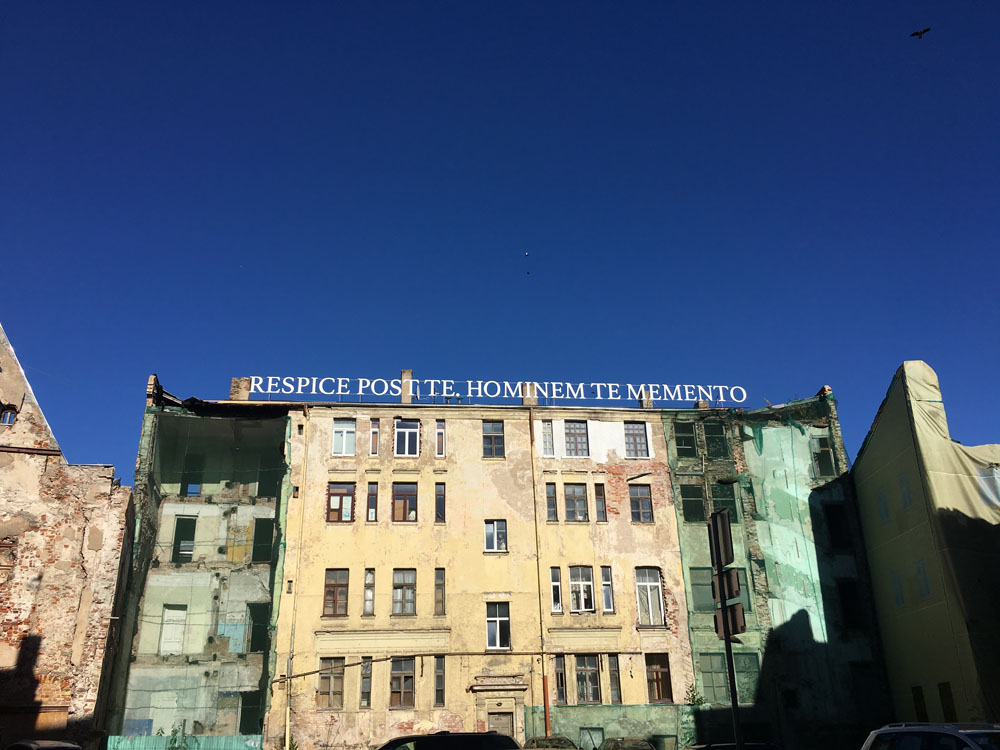[EN]
Respice post te. Hominem te memento, a work by Krista and Reinis Dzudzilo, was created for the Sculpture Quadrennial Rīga 2016 and put on show on the rooftop of an abandoned building on 30 Kungu Street in Rīga. The theme of the quadrennial was “Liberalism and Conservativism” and it laid stress upon global questions in a political, social and cultural context, addressing the understanding of national identity and the role of citizens in local and global politics.
Art historian Santa Hirša wrote the following for the quadrennial catalogue: “In combining the natural scenography of the city – an abandoned Old Rīga house on the verge of collapse – Krista and Reinis Dzudzilo interpret the classical motif of memento mori with the Latin proverb ‘Respice post te. Hominem te memento’ (meaning “Look behind you, remember that you are human.”). It’s a gesture reminding one of the changing nature of everything that lives, as well as of death’s everlasting presence in all things.”
Kristas un Reiņa Dzudzilo darbs “Respice post te. Hominem te memento” tika radīts speciāli Tēlniecības kvadrinnālei 2016. gadā un eksponēts uz pamestas mājas ēkas jumta Kungu ielā 30 Rīgā. Kvadrinnāles tēma bija “Liberālisms un konservatīvisms”, akcentējot globālos jautājumus politiskā, sociālā un kultūras kontekstā, kā arī pievēršoties izpratnei par nacionālo identitāti un pilsonisko lomu lokālā un globālā politikas mērogā.
Mākslas zinātniece Santa Hirša kvadrinnāles katalogā raksta: “Apvienojot dabisko pilsētvides scenogrāfiju – pamestu un pussabrukušu Vecrīgas namu –, Krista un Reinis Dzudzilo interpretē klasisko memento mori tēmu ar seno romiešu teicienu “Respice post te, hominem te memento” (“Paskaties atpakaļ. Atceries, ka esi tikai cilvēks”). Ar šo žestu atgādinot par visa dzīvā nepastāvīgo dabu un mūžīgo nāves klātesamību it visā.”

